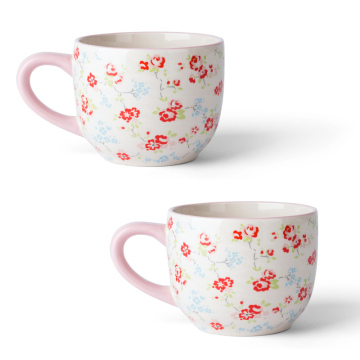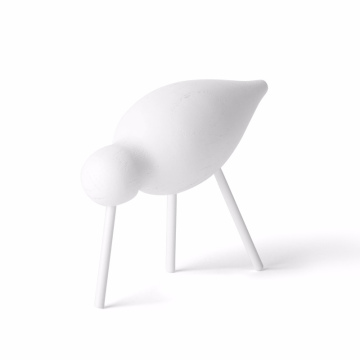Fugu Ojiya: Japan’s Exquisite Pufferfish Rice Porridge
Fugu Ojiya is a luxurious and comforting Japanese dish made by simmering rice in a rich broth infused with the delicate flavors of fugu (pufferfish). This traditional rice porridge, also known as ojiya or zosui, is often enjoyed at the end of a fugu meal, utilizing the remaining umami-rich broth from the hot pot (fugu nabe).
History of Fugu Ojiya
Fugu (pufferfish) has been consumed in Japan for more than 1,000 years, with references to the fish found in ancient texts such as the Nihon Shoki, Japan’s oldest historical record. Despite its long history, consuming fugu was always associated with risk due to the fish's toxic parts. It wasn’t until the Edo period (1603–1868) that the art of preparing fugu safely became refined, with chefs learning to delicately remove the toxic portions and leave only the edible parts. By the late Edo period, fugu had become a luxurious and revered food, and it became a common part of kaiseki (traditional Japanese multi-course meals), often served at special events or gatherings.
The evolution of fugu ojiya is tied closely to fugu nabe, a hot pot dish made from simmered pufferfish. The tradition of turning the leftover fugu broth from the hot pot into a porridge-like dish is said to date back to the Meiji period (1868–1912). The ojiya served as a way to "stretch" the meal further while also enhancing the flavors. Traditionally, this was seen as a luxurious yet humble dish, made with respect for both the ingredients and the culinary tradition of using every part of a meal.
Culinary Techniques & Terms in Fugu Ojiya
- Fugu Broth and Dashi: The foundation of fugu ojiya is the fugu broth, which is essentially the same as dashi, a traditional Japanese stock. Dashi is the backbone of many Japanese dishes, created with kombu (dried kelp) and katsuobushi (dried bonito flakes), both of which are rich in umami. However, in the case of fugu ojiya, the broth is created from the bones and leftover bits of fugu from the hot pot, creating a unique and delicate flavor that cannot be easily replicated. The broth is typically simmered slowly to extract maximum flavor while preserving the pufferfish's subtle taste. The broth is then used to cook the rice, which absorbs the rich flavors, giving the ojiya its luxurious and smooth texture.
- Umami: This term refers to one of the five basic tastes (along with sweet, salty, sour, and bitter). Umami is often described as a savory, deep, or meaty flavor, and it is naturally present in foods like fugu, seaweed, soy sauce, and aged cheeses. The umami in fugu ojiya is derived from the fugu meat, the fish stock, and the dashi base, which is the perfect balance of flavor and nourishment.
- Zosui (雑炊): Zosui, a Japanese rice porridge, is quite similar to congee in Chinese cuisine. Zosui is made by cooking rice in a flavorful broth, and the addition of egg and seasonings such as soy sauce or sake gives the dish both richness and complexity. The fugu zosui, or fugu ojiya, uses fugu broth as the base and turns the cooked rice into a creamy, velvety texture. Zosui is typically served as a comforting, light meal, especially in colder months.
- Egg Swirl (Tamagoyaki): In many traditional Japanese dishes, eggs are added for both richness and texture. In the case of fugu ojiya, lightly beaten egg is poured into the hot broth toward the end of cooking. The egg creates a silky, custard-like texture, which is a hallmark of chawanmushi (steamed egg custard) and other refined Japanese dishes. The egg is carefully stirred to achieve a soft, smooth consistency, enhancing the overall texture of the porridge.
- Mottainai: This is a philosophy deeply rooted in Japanese culture and speaks to the value of using every part of an ingredient or resource. The tradition of turning the leftover fugu broth into ojiya exemplifies mottainai because it ensures nothing is wasted, and every part of the meal is used thoughtfully and respectfully. The idea of not wasting food and making the most out of every ingredient reflects a sustainable approach that has long been a part of Japanese culinary culture.
- Umami-Rich Broth: The careful process of extracting umami from the fugu bones and simmering it into a concentrated broth is a key part of fugu ojiya. This broth can often be enriched with a bit of mirin (sweet rice wine) or sake (Japanese rice wine), which adds depth and sweetness to balance the natural savoriness of the fish stock.
The Art of Preparing Fugu Ojiya
Making fugu ojiya is an intricate process that requires both technique and patience. After the fugu nabe (hot pot) meal, the broth, which is infused with the essence of the pufferfish, is retained for use in making the porridge. The rice is cooked slowly in this flavorful broth, absorbing all the richness and depth.
The key steps in preparing fugu ojiya include:
- Simmering the Broth: After the fugu nabe, the broth is carefully strained to remove any bits of fugu. The liquid is then simmered again to intensify the flavors and create a rich, umami-packed base.
- Cooking the Rice: In the rich fugu broth, short-grain rice is added, as it absorbs liquid well and turns soft, making it perfect for this dish. The rice is gently cooked, often becoming very tender and absorbing the savory stock.
- Adding the Egg: To create a silky texture, lightly beaten egg is poured into the simmering porridge. The egg forms delicate threads throughout the porridge, giving it a luxurious mouthfeel.
- Finishing Touches: The dish is finished with garnishes such as scallions or yuzu zest to provide a refreshing contrast to the richness of the porridge. The yuzu gives a bright, citrusy note that cuts through the heaviness of the dish, adding complexity and balance.
Cultural Significance and Modern Appreciation
While fugu ojiya originated as a way to make use of the leftovers from a fugu hot pot, it has since evolved into a dish symbolizing the elegance and refinement of Japanese cuisine. Its historical significance as a final course in a luxurious meal has helped it remain a sought-after dish for special occasions, especially in high-end kaiseki dining experiences.
The meticulous preparation and attention to detail make fugu ojiya a highly regarded dish in Japan’s culinary landscape. It’s a dish that speaks to both the refinement of the chef and the respect for the ingredients used. In recent years, its reputation as a symbol of luxury has been sustained, and it continues to be a beloved part of Japanese gastronomy.
Whether served in a high-end restaurant or enjoyed as part of a family gathering, fugu ojiya represents the beauty of Japanese culinary philosophy, which emphasizes balance, simplicity, and respect for every ingredient.





